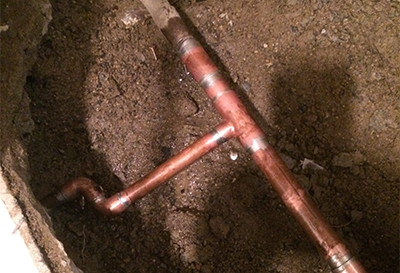How to Check If Your Home Has a Covert Leak
How to Check If Your Home Has a Covert Leak
Blog Article
Just how do you really feel in regards to Finding hidden leaks?

Early detection of dripping water lines can minimize a possible catastrophe. Some small water leaks may not be visible.
1. Analyze the Water Meter
Examining it is a surefire method that aids you find leaks. If it relocates, that indicates a fast-moving leak. This suggests you may have a sluggish leak that could even be underground.
2. Examine Water Consumption
Analyze your water bills and also track your water consumption. As the one paying it, you should observe if there are any type of discrepancies. If you detect sudden changes, regardless of your consumption coinciding, it means that you have leakages in your plumbing system. Keep in mind, your water expense need to fall under the exact same range monthly. An abrupt spike in your expense indicates a fast-moving leakage.
A consistent boost every month, even with the very same practices, shows you have a slow-moving leak that's additionally gradually rising. Call a plumber to extensively examine your building, specifically if you really feel a warm location on your flooring with piping underneath.
3. Do a Food Coloring Examination
When it involves water usage, 30% comes from commodes. Examination to see if they are running properly. Decline specks of food shade in the tank and wait 10 mins. If the shade somehow infiltrates your dish during that time without flushing, there's a leakage in between the tank and also bowl.
4. Asses Exterior Lines
Do not neglect to inspect your outdoor water lines as well. Test spigots by affixing a garden tube. Ought to water permeate out of the connection, you have a loosened rubber gasket. Change this and make sure all links are limited. It will certainly help get it expertly took a look at and also kept each year if you have actually obtained a lawn sprinkler system. One little leakage can throw away lots of water as well as spike your water expense.
5. Check and also Examine the Circumstance
Homeowners should make it a behavior to examine under the sink counters as well as even inside cupboards for any kind of bad odor or mold growth. These two red flags show a leakage so timely attention is called for. Doing regular examinations, also bi-annually, can conserve you from a significant trouble.
If you understand your residence is already old, keep a careful eye on your heating systems, tubes, pipelines and so on. Look for discolorations and also compromising as many appliances and also pipelines have a life expectancy. They will additionally normally degrade because of wear and tear. If you believe leaking water lines in your plumbing system, don't wait for it to intensify. Call a professional plumber right now so you do not end up with a terrible mess in your house.
Early discovery of dripping water lines can mitigate a prospective catastrophe. Some small water leaks may not be visible. Checking it is a surefire method that helps you find leaks. One little leak can throw away heaps of water and spike your water expense.
If you suspect leaking water lines in your plumbing system, don't wait for it to rise.
WARNING SIGNS OF WATER LEAKAGE BEHIND THE WALL
PERSISTENT MUSTY ODORS
As water slowly drips from a leaky pipe inside the wall, flooring and sheetrock stay damp and develop an odor similar to wet cardboard. It generates a musty smell that can help you find hidden leaks.
MOLD IN UNUSUAL AREAS
Mold usually grows in wet areas like kitchens, baths and laundry rooms. If you spot the stuff on walls or baseboards in other rooms of the house, it’s a good indicator of undetected water leaks.
STAINS THAT GROW
When mold thrives around a leaky pipe, it sometimes takes hold on the inside surface of the affected wall. A growing stain on otherwise clean sheetrock is often your sign of a hidden plumbing problem.
PEELING OR BUBBLING WALLPAPER / PAINT
This clue is easy to miss in rooms that don’t get much use. When you see wallpaper separating along seams or paint bubbling or flaking off the wall, blame sheetrock that stays wet because of an undetected leak.
BUCKLED CEILINGS AND STAINED FLOORS
If ceilings or floors in bathrooms, kitchens or laundry areas develop structural problems, don’t rule out constant damp inside the walls. Wet sheetrock can affect adjacent framing, flooring and ceilings.
https://www.servicemasterbyzaba.com/blog/how-to-detect-water-leakage-in-walls/

I ran across that review on Finding hidden leaks when doing a search on the search engines. Do you know about someone else who is curious about the topic? Be sure share it. Thanks a lot for taking the time to read it.
Report this page